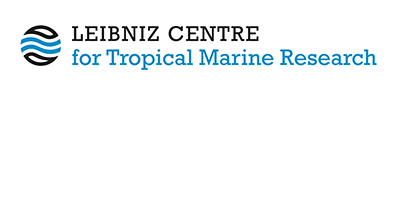Salinity and dietary manipulation can ameliorate extreme summer heatwaves stress in European seabass, Dicentrarchus labrax.
Islam, Md Jakiul, Hossain, Amir and Kunzmann, Andreas  ORCID: https://orcid.org/0000-0002-9500-4332
(2025)
Salinity and dietary manipulation can ameliorate extreme summer heatwaves stress in European seabass, Dicentrarchus labrax.
Aquaculture, 601
.
p. 742252.
DOI https://doi.org/10.1016/j.aquaculture.2025.742252.
ORCID: https://orcid.org/0000-0002-9500-4332
(2025)
Salinity and dietary manipulation can ameliorate extreme summer heatwaves stress in European seabass, Dicentrarchus labrax.
Aquaculture, 601
.
p. 742252.
DOI https://doi.org/10.1016/j.aquaculture.2025.742252.
|
Text
Islam.pdf - Published Version Available under License Creative Commons: Attribution-Noncommercial-No Derivative Works 4.0. Download (2MB) |
Abstract
Climate change-induced extreme heatwaves are rapidly becoming a common environmental stressor, having a significant impact on fish. There is a growing emphasis on researching mitigation options for fish to fare better during heatwave events. To explore potential mitigation strategies, European seabass, Dicentrarchus labrax (36.19 ± 2.68 g) was raised under four experimental conditions: Control [30 practical salinity unit (PSU)], Treatment-1 (12 PSU), Treatment-2 (12 PSU while fed the diet supplemented with 4.5 % propolis), and Treatment-3 (30 PSU while fed the diet supplemented with propolis) for 60 days followed by 20 days of heatwave (30 °C) exposure under controlled laboratory conditions. To understand fish response, this study focused on the assessment of growth, feeding performances, and a range of biochemical, metabolic, and molecular parameters. These findings indicate that fish reared in 12 PSU while fed propolis supplemented diet (Treatment-2) exhibited significantly higher final body weight (FWG), percent weight gain (PWG), and specific growth rate (SGR) compared to the control group (p < 0.05). During heatwave exposure, fish in the 12 PSU group, whether fed propolis (Treatment-2) or not (Treatment-1), exhibited lower cortisol levels than the fish in control condition. On the 20th day of heatwave exposure, compared to fish in control condition, fish in the 12 PSU group, whether fed propolis or not, exhibited significantly higher superoxide dismutase assay (SOD) activity in gill tissue, whereas a contrasting trend was observed in muscle tissue. Glutathione peroxidase (GPx) activity was found significantly lower in fish in the 12 PSU group, whether fed propolis or not. On day 20 of heatwave exposure, the heat shock protein 70 (HSP70) and immunoglobulin growth factor 1 (Igf1), fatty acid desaturase 2 (FADS2), and tumor necrosis alpha (TNF-1α) genes were significantly (p < 0.05) upregulated in the liver tissue of fish raised at 30 PSU group when fed propolis (Treatment-3). Most of the tested parameters exhibited variable patterns across tissues suggesting that the fish stress response is influenced by both propolis supplemented diet and varying salinities during heatwave exposure. During the heatwave exposure European seabass reared in 12 PSU while feeding on propolis-supplemented diet or not, demonstrated higher growth and physiological responses than fish in control condition . Moreover, there were positive physiological benefits observed in fish raised in 30 PSU (Treatment-3), while fed propolis supplemented diet. The study proposes that adjusting salinity level and incorporating propolis into the diet can be effective strategies to mitigate the negative impacts of heatwave in European seabass.
| Document Type: | Article |
|---|---|
| Programme Area: | PA1 |
| Research affiliation: | Ecology > Experimental Aquaculture |
| Refereed: | Yes |
| Open Access Journal?: | No |
| DOI: | https://doi.org/10.1016/j.aquaculture.2025.742252 |
| ISSN: | 00448486 |
| Date Deposited: | 09 Apr 2025 15:07 |
| Last Modified: | 09 Apr 2025 15:07 |
| URI: | https://cris.leibniz-zmt.de/id/eprint/5584 |
Actions (login required)
 |
View Item |





 Tools
Tools Tools
Tools